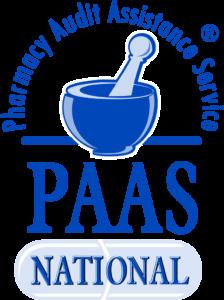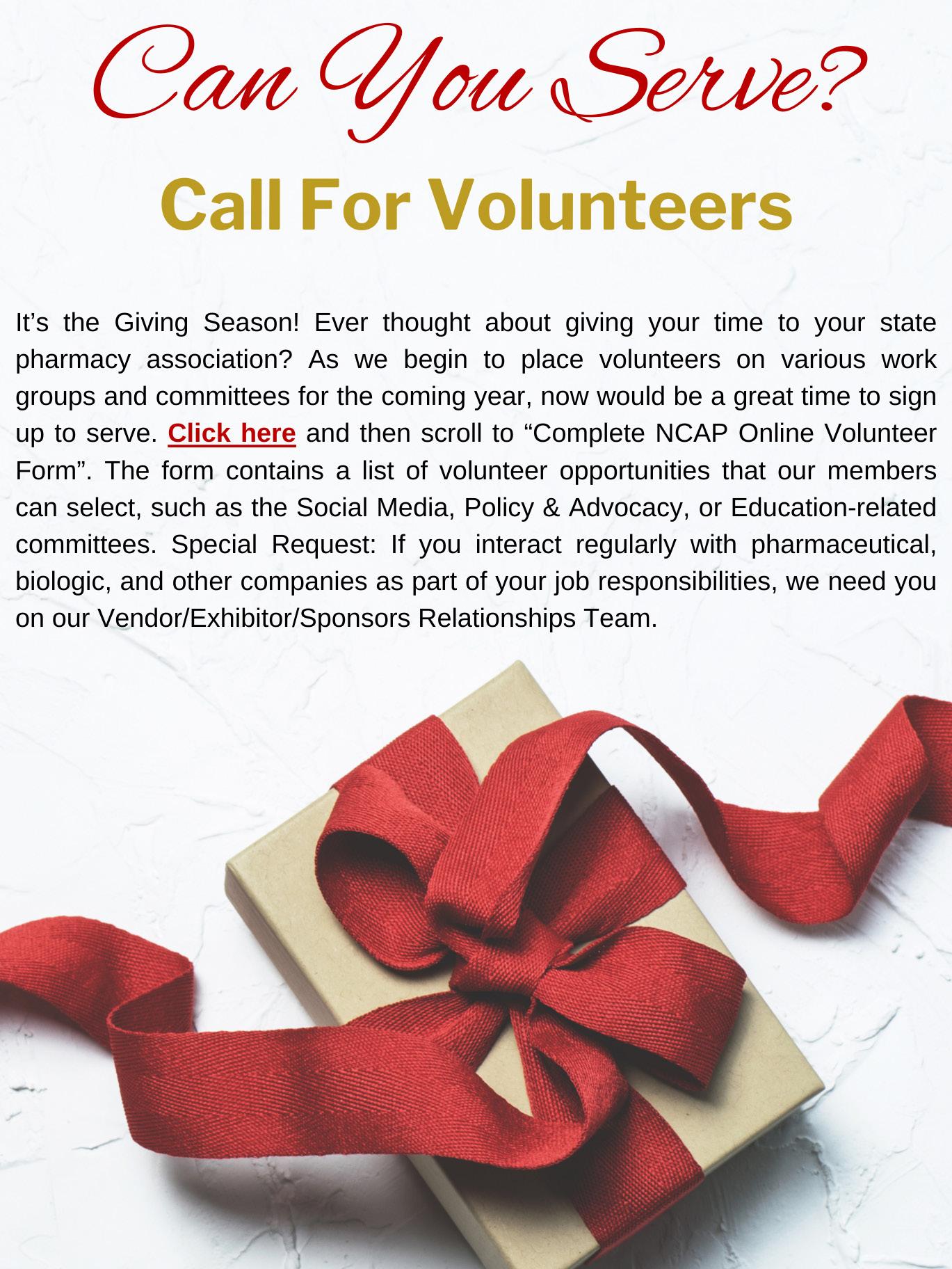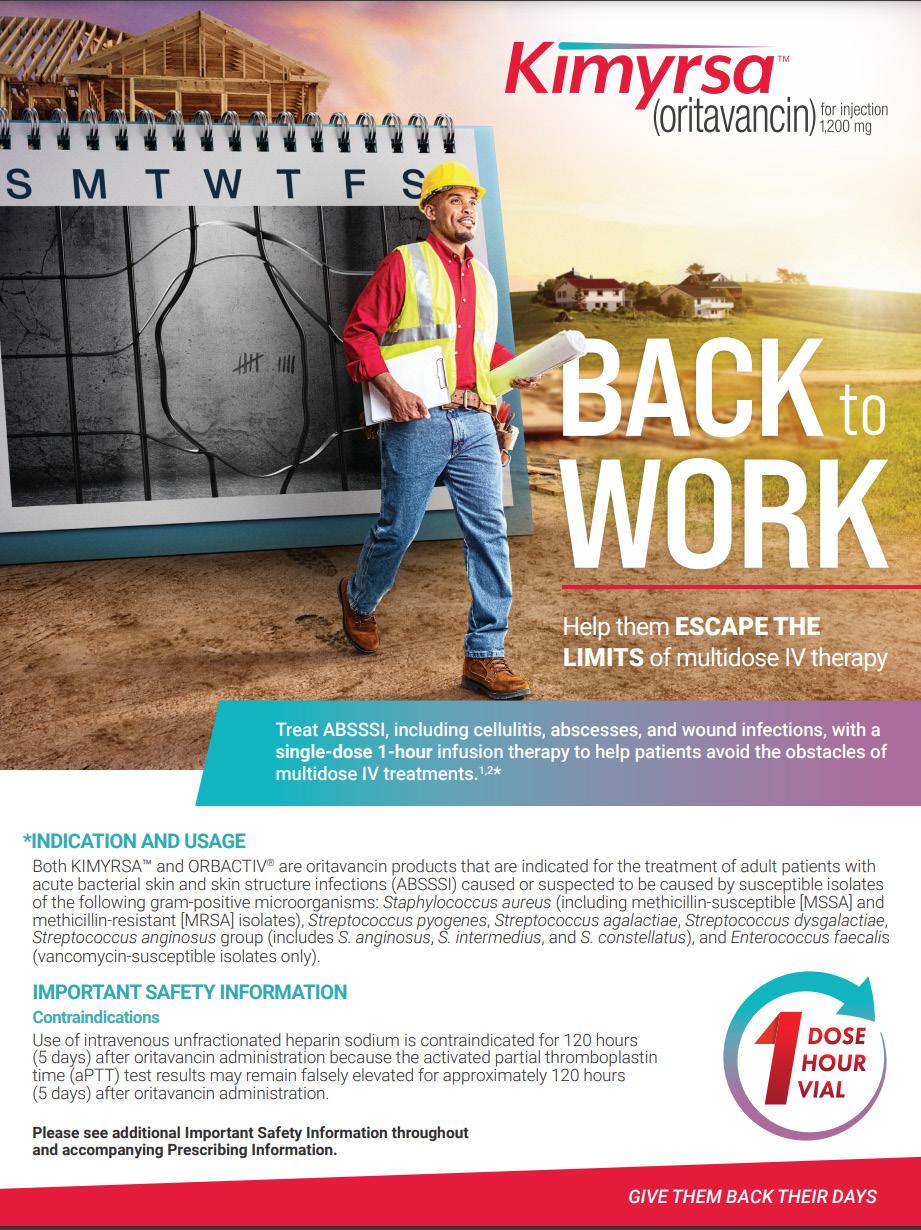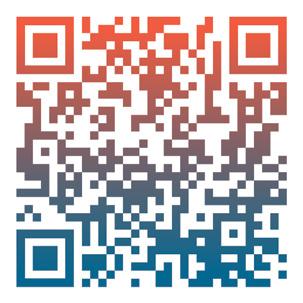North Carolina



North Carolina Pharmacist (NCP) is currently accepting articles for publication consideration. We accept a diverse scope of articles, including but not limited to: original research, quality improvement, medication safety, case reports/case series, reviews, clinical pearls, unique business models, technology, and opinions.
NCP is a peer-reviewed publication intended to inform, educate, and motivate pharmacists, from students to seasoned practitioners, and pharmacy technicians in all areas of pharmacy.
Articles written by students, residents, and new practitioners are welcome. Mentors and preceptors – please consider advising your mentees and students to submit their appropriate written work to NCP for publication.

Don’t miss this opportunity to share your knowledge and experience with the North Carolina pharmacy community by publishing an article in NCP.
Click on Guidelines for Authors for information on formatting and article types accepted for review.
For questions, please contact Tina Thornhill, PharmD, FASCP, BCGP, Editor, at tina.h.thornhill@ gmail.com
North
Located at: 1101 Slater Road, Suite 110 Durham, NC 27703
Phone: (984) 439-1646 Fax: (984) 439-1649 www.ncpharmacists.org
Official Journal of the North Carolina Association of Pharmacists

1101 Slater Road, Suite 110 Durham, NC 27703

Phone: (984) 439-1646
Fax: (984) 439-1649 www.ncpharmacists.org
Tina Thornhill
LAYOUT/DESIGN
Rhonda Horner-Davis
Anna Armstrong
Jamie Brown
Lisa Dinkins
Jean Douglas
Brock Harris
Amy Holmes
John Kessler
Angela Livingood Bill Taylor
EXECUTIVE DIRECTOR
Penny Shelton
PRESIDENT Matthew Kelm
PRESIDENT-ELECT
Ouita Gatton
PAST PRESIDENT
Elizabeth Mills
TREASURER
Ryan Mills
SECRETARY
Paige Brown
Shane Garrettson, Chair, SPF
Carrie Baker, Chair, NPF
Trish Mashburn, Chair, Community Mary-Haston Vest, Chair, Health-System Amber M Lussier, Chair, Chronic Care
Holly Canupp, Chair, Ambulatory Macary Weck Marciniak, At-Large
Vinay Patel, At-Large
Riley Bowers, At-Large
North Carolina Pharmacist (ISSN 0528-1725) is the official journal of the North Carolina Association of Pharmacists. An electronic version is published quarterly. The journal is provided to NCAP members through allocation of annual dues. Opinions expressed in North Carolina Pharmacist are not necessarily official positions or policies of the Association. Publication of an advertisement does not represent an endorsement. Nothing in this publication may be reproduced in any manner, either whole or in part, without specific written permission of the publisher.
“Time flies when you are having fun” is the phrase that resonated in my head when I thought about the final President’s article, I would share with the North Carolina Association of Pharmacists (NCAP). Identifying the source of this idiom is not as simple as one would expect. Between 38 and 32 BC, the roman poet Virgil recorded ‘fugit inreparabile tempus,’ which means ‘time escapes and is irretrievable.’ Around 1800, Shakespeare, in the sonnet “A Lover’s Complaint,” penned the words “…the swiftest hours, as they flew.” Regardless of the source, the phrase resonates with many of us when reflecting on a milestone.
I have been fortunate this year to participate in a structured mentor program. I have been paired with a recent Campbell graduate, currently completing her PGY -1 residency. Last week we spoke about the importance of professional engagement. It has been my experience that any investment made in becoming involved in a professional organization comes to pay you back 10-fold. I encouraged my mentee to join both a national organization and one at the state level. It has been a revelation over the course

of my career how much can be accomplished at the state level. From the timely information shared in eNCAPsulated, to the networking opportunities at NCAP’s Convention and relationships formed with other pharmacists in this state, the impact of NCAP cannot be understated.
Without a doubt, 2022 was a successful year for NCAP. From a successful legislative day to hosting our first in-person annual Convention since the pandemic, to be followed by the equally well-received Student Conference and Residency Showcase, and the Anti-Infective Conference. We also established and welcomed our inaugural class of Fellow Practitioners. Furthermore, NCAP continues to provide significant professional development programming giving pharmacists the resources to take advantage of our newly acquired authorities for hormonal contraception, post-exposure prophylaxis, long-acting injectable administration, nicotine replacement, and prenatal vitamins. Additionally, membership is up and we had the most successful year of industry partnership in convention support.
NCAP is poised for so much more in 2023. With the start of a new year, we begin the long legislative session. Historically, this is the period in our state legislative cycle where the most progress can be made, and NCAP has a robust agenda for the coming year. Our
priorities will focus on collaborative practice, fair reimbursement for pharmacy services, pharmacy benefit managers’ business practices reforms, and test and treat authorities. I highly encourage our members to become more knowledgeable of these priorities through our advocacy website and by supporting the NCAP Advocacy Fund.
Finally, I want to thank several important contributors to our past year’s success:
1. To our Board of Directors: you have been a dedicated and talented team of volunteers who share their time, expertise, and energy to shape our organization’s present and future. I greatly appreciate the group’s collaborative nature and engagement in our organization.
2. To our Endowment Board: your financial support to the educational mission and organization has been notable.
3. To the NCAP staff: your consistent and welcoming demeanor, responsiveness to requests, and tireless efforts to make our in-person events successful cannot be understated. We are fortunate to have such a dedicated team supporting the organization.
4. To Penny Shelton, our Executive Director: on a dayto-day basis, your guidance
of our organization towards new opportunities leads the staff to achieve the Board’s goals and serves as an exceptional representative of pharmacists across this state. In my role as President, I have the good fortune of having a nearly weekly call with Penny. There is no harder-working, thoughtful, or pleasant association executive in the country, and I want to share my personal appreciation of her with you.
As I transition my role to Immediate Past President, I look forward to supporting the Board of Directors, Ouita Gatton, our next NCAP President, and continuing to be dedicated to advancing pharmacy.
Helping Community Pharmacies Gain Confidence and Peace Of Mind.
Be Proactive • Be Prepared • Be Protected
paasnational.com

Online PTCB prep courses for pharmacy technicians. We help you pass your exam and attain certification. Click the logo and use the discount code NCAP for 10% off the all course bundle.

Edupharmtech.com


Shionogi is a 144-year-old global pharmaceutical company with headquarters in Osaka, Japan and offices around the world. We’re dedicated to advancing the greater good by developing, partnering and commercializing medicine to treat serious unmet medical needs.
shionogi.com

 By: Sha’Deja Johnson
Taylor Patterson
Dr. Carolyn Ford Paris Friday
Dr. Edward T. Chiyaka
By: Sha’Deja Johnson
Taylor Patterson
Dr. Carolyn Ford Paris Friday
Dr. Edward T. Chiyaka
Most students need adaptability as a critical skill on the road to a degree. Over four years or longer, college life can present unforeseen challenges. These challenges include managing finances, jobs, family issues, mental health, relationships, and debt. To succeed, students must handle these obstacles and maintain their academic performance. Various circumstances can influence a student’s capacity to respond to stressful situations. Personality type is one of the factors. How students react to stressful events may depend on whether they are extroverted or logical thinkers.
The first confirmed coronavirus case appeared in Wuhan, China, in December 2019. It was not until January 2020 that the United States would have its first confirmed case of the coronavirus disease (COVID-19). The coronavirus, a severe acute respiratory infection known as SARS-CoV-2, is airborne and
infectious and can affect multiple organ systems. As cases of the disease rose in the United States, many schools and colleges transitioned to either synchronous or non-synchronous virtual learning.1,2 For many, this was a difficult challenge, while others excelled.3 As the first anniversary of this pandemic approached, it was unclear whether students knew how to improve their academic performance in the virtual setting.
Assessing a student’s personality type has been reported as a tool that can be used to improve academic performance.4 Knowing personality type can help students be aware of their strengths and weaknesses, allowing them to make the necessary adjustments.5 These adjustments can help improve their academic performance by serving as a guide.6 The Big Five personality trait framework, based on five personality traits: openness, conscientiousness, extraversion, agreeableness, and neuroticism, has
emerged as an effective and efficient approach for exploring the relationship between personality and various academic behaviors.7 Being disciplined, organized, and goal-oriented exemplifies conscientiousness. The degree of emotional stability, impulse control, and anxiety is referred to as neuroticism. Extraversion is characterized by increased sociability, assertiveness, and talkativeness, while agreeableness is altruistic and cooperative. An adventurous and curious person is described as having an openness to experience.
Some studies were conducted during the COVID-19 pandemic assessing the impact of personality on academic learning. In a study exploring how the Big Five personality traits relate to student satisfaction with synchronous online academic learning, conscientiousness and openness were shown to have a significant relationship with synchronous online academic learning.8 Similarly, Liu, Lithopoulos,
and Zhang (2021) analyzed the Big Five personality traits with perceived stress during the pandemic in people over 18 in Canada.9 The extraversion and neuroticism personality traits, with neuroticism having the highest connection, were found to predict higher reported stress levels.9 In another study investigating graduate students’ satisfaction in mixed and online courses, the Myers-Briggs Type Indicator was used to determine the personality types (MBTI).5 According to the study, the satisfaction with blended learning varied between introverts and extroverts. The pleasure of extroverts with this style of learning was lower.5 Additionally, it was discovered that sensors were more satisfied with online courses than intuitive learners.
Tavitiyaman, Ren, and Fung (2021) investigated how the personality types of hospitality students affected their learning, financial, and technical anxiety, as well as how this affected their learning experience during the transition from the traditional classroom to online learning.10 According to their findings, individuals with high levels of agreeableness and openness, experienced high levels of learning, financial, and technological anxiety. On the other hand, students with dominant traits such as conscientiousness, neuroticism, and extroverts reported less anxiety about learning, finances, and technology. Similar findings were observed in a study that examined how students’ experiences with online learning during the COVID-19 epidemic were influenced by their educational back-
ground, personality traits, and gender.11 It was discovered that personality has a significant correlation with learning outcomes. Extraversion was negatively correlated with learning outcomes, whereas conscientiousness and agreeableness were positively associated with learning outcomes.
Due to the recent pandemic, many changes were made to educational delivery processes, including rapidly transitioning from in-person to virtual platforms without much-supporting evidence of effectiveness. The learning process and a student’s success under various learning styles can both be significantly influenced by a person’s personality. As a result, a greater understanding of one’s personality may help them discover more about who they are, their strengths and limitations, and the environments in which they are most successful. It is important to comprehend the impact of personality type on student performance in addition to efforts being made to enhance student performance in both online and conventional delivery modalities. This research was done to determine whether students’ personality types affected their academic performance when learning online as opposed to other delivery methods during the pandemic.
An online cross-sectional survey was sent to undergraduate students at a private university in North Carolina in April 2021. The Google Form survey was distributed to undergraduate students via email, including a link to the
Google Form survey. The survey included demographic information on age, major being studied, race, school year, grade point average (GPA), and class delivery mode, among others. Personality type was assessed using the Myers-Briggs Type Indicator (MBTI). As part of survey completion, students had to connect to the 16Personalities website to complete the personality survey and report the survey results in the main survey form. Participants were required to read the consent statement and agree to participate before beginning the survey. A lottery incentive was offered, and those who opted for the prize had to enter their email address upon completing the survey. The Wingate University Research Review Board (RRB) approved the study protocol and procedures.
All statistical analyses were performed using SPSS 24 (IBM Corp). We computed descriptive statistics to describe the study participants’ demographic characteristics. GPA and age were both considered continuous variables. The average GPA of each of the personality traits by subgroup was calculated. The student t-test was used to compare GPA changes for different personality types. One-way analysis of variance (ANOVA) was used to determine the effect of the mode of delivery on performance as measured by the cumulative GPA. A p-value of <.05 was considered statistically significant.
The study included 79 participants aged 18 to 52 years old.
Descriptive statistics of the demographic results are displayed in Table 1. The mean age of the students was 21.9 (standard deviation (SD) = 5.6) years; most students (62%) were taking their classes online and were full-time students (93.7%).
Table 2 shows the average GPA changes from Fall 2019 to Spring 2020 based on the student’s personality type. Of the 79 participants, 23 reported extroversion, while 56 reported introversion. The mean GPA among extroverts remained consistent across both the Fall 2019 and Spring 2020 semesters, while the introverted participants increased from 3.51 to 3.57 from Fall 2019 to Spring 2020. Also, the mean GPA for introverts was consistently higher than for extroverts. Of the 79 participants, 45 reported being intuitive, while 34 reported being observant. The mean GPA of the intuitive participants in Fall 2019 and Spring 2020 was 3.48 and 3.51, respectively. The mean GPA of the observant participants was 3.41 and 3.45 in Fall 2019 and Spring 2020, respectively. There were 53 students with feeling characteristics and 26 with thinking characteristics. For the feeling characteristic, there was an increase in mean GPA from 3.40 to 3.46 across semesters. In the thinking group, there was a decrease in mean GPA from 3.56 to 3.55. Lastly, there were 49 participants in the judging group and 30 in the prospecting group. The judging group observed an increase in GPA from 3.52 to 3.57, while the prospecting group observed an increase in GPA from 3.33 to 3.36. For this study, none
of the GPA changes were statistically significant. A comparison in mean GPAs between each pair of personality types showed no statistical differences (p > 0.05) in average GPA change.
We conducted a one-way Analysis of Variance (ANOVA) to compare the three delivery modes’ effect on each semester’s performance (see Table 3). The results for Spring 2020 indicated a significant impact of the mode of delivery, F (2,76) = 5.19, p = .008. Post hoc analyses using the Tukey HSD test revealed a significant difference between the mostly online group (M = 3.34, SD = 0.62) and mostly in-person (M = 3.74, SD = 0.21); between the mostly online group (M = 3.34, SD = 0.62) and half online, half in person (M = 3.72, SD = 0.30). There was no statistically significant difference in mean GPA for the different modes of delivery for Fall 2019.
The rapid transition from in-person to remote learning during the COVID-19 pandemic created challenges for educational institutions and learners around the world.12 Similar to grades K-12, higher education institutions were met with unique challenges that required flexibility and adaptability from students and faculty to achieve better educational outcomes. This study was undertaken to determine the influence of personality types on student performance during the COVID-19 pandemic.
Our study findings showed a slight increase in the GPA from
fall 2019 to Spring 2020. However, these increases were not statistically significant and opposite to study expectations. The basic premise of our study was that a sudden transition from traditional to virtual classroom delivery would have a detrimental educational impact. Comparing average GPAs at the end of each semester according to personality type also resulted in statistically insignificant grade changes. In our study, no particular personality type or subtype substantially impacted academic outcomes. This finding was also inconsistent with findings from other studies.4,11
The faculty’s ability to be more adaptable with their course management is one explanation for why students retained better GPAs during the pandemic. Course policies were modified to have flexibility in class attendance, assignment due dates, make-up work, examination retakes, and different assessments. Many faculty offered a variety of lecture formats to make the acquisition of course information more convenient for students. Some offered in-person lectures under specific guidelines on sitting arrangements, live Zoom lectures, recorded lectures, and a combination of these various lecture formats. Additionally, universities around the country also modified course drop policies that allowed students to drop courses throughout the entire semester up to the final examination as determined to be in the best interest of the student’s academic well-being. This policy alone could have significantly impacted the final term GPAs.
A student performing poorly or below standards was given grace and allowed to drop the course without penalty to their GPAs or academic records.
At the pandemic’s beginning, all courses were quickly switched to the virtual format only. After some virus mitigation, course delivery methods became variable in accordance with university resources. This study population mainly received online, a combination of online and in-person (hybrid), and primarily in-person only. This study found that the delivery method had no appreciable effect on the GPA for the Fall 2019 term. However, there was a significant difference between the primarily online group and mostly in-person group and the mostly online group and half online, half in-person group. Most online students had the lowest mean GPA in the Spring 2020 semester compared to other categories. The lower GPA for the mostly online group could be due to various reasons that may necessitate further research. Teachers and students highlight the main challenges of online learning, being financial and technical support.12 Having outdated devices or low socioeconomic status can make online learning more challenging.13 This could account for the higher mean GPA seen in students mostly in person or half online, half in person.
The sudden shift from in-person to online learning significantly impacted institutions and learners.12,14 Many factors, such as adaptability, flexibility, personality type, academic emotion, and course delivery method, may
influence students’ academic performance.8,10,15 Although this study revealed that personality type did not affect academic performance during the pandemic’s first year, many other factors, such as instructors’ flexibility, as previously described, could have mitigated the response. Also, transcribing errors could have occurred by study participants who self-reported personality test results in a Google Form.
The finding that learners performed better academically with some degree of in-person learning was expected and demonstrated in this population.16
Learning under stress and urgency in a primarily digital environment coupled with technology challenges and competency, poor socioeconomic factors, intrusions by humans and pets, and compatibility was not ideal. Despite these circumstances, some learners could quickly adapt and adjust their learning styles as indicated in their maintenance or improvement in academic performance.
Several limitations may have affected the results of this study. Since the study’s participants were selected from a single university, generalizations to a broader sample of college students may not be appropriate. A larger sample size or inclusion of more than one academic institution could have resulted in a more robust response. The GPAs of study participants were self-reported; therefore, there is a chance of over or under reporting. Nonresponse bias is also possible, as those who did not respond might have had lower
GPAs than the respondents. Despite these drawbacks, this study adds to the body of research showing how a student’s personality may affect their academic achievement.
In conclusion, there was no noticeable mean GPA difference between personality types from Fall 2019 to Spring 2020, and students can look to other factors to improve adaptation to a changing environment.
Authors: Sha’Deja Johnson, P4 Doctor of Pharmacy Candidate at Wingate University School of Pharmacy in Wingate, NC; Taylor Patterson, P4 Doctor of Pharmacy Candidate at Wingate University School of Pharmacy in Wingate, NC; and Paris Friday, P4 Doctor of Pharmacy Candidate at Wingate University School of Pharmacy in Wingate, NC; Carolyn Ford, Pharm.D., Professor, and Edward T. Chiyaka, Ph.D., Assistant Professor, (Corresponding Author) e.chiyaka@wingate. edu. Wingate University School of Pharmacy, Wingate, NC.
1. Bassok D, Michie M, Cubides-Mateus DM, Doromal JB, Kiscaden S. The divergent experiences of early educators in schools and child care centers during COVID-19: Findings from Virginia. Virginia: University of Virginia EdPolicyWorks. 2020.
2. Murphy L, Eduljee NB, Croteau K. College student transition to synchronous virtual classes during the COVID-19 pandemic in Northeastern United States. Pedagogical Research. 2020;5(4).
3. Sharin AN. E-Learning During Covid-19: A Review of Literature. Jurnal Pengajian Media Malaysia. 2021;23(1):15-28.
4. Mateus C, Campis R, Aguaded I, Parody A, Ruiz F. Analysis of personality traits and academic performance in higher education at a Colombian university. Heliyon. 2021;7(5):e06998.
5. Bolliger D, Erichsen E. Student Satisfaction with Blended and Online Courses
Based on Personality Type/Niveau de satisfaction des étudiants dans les cours hybrides et en ligne basé sur le type de personnalité. Canadian Journal of Learning and Technology/La revue canadienne de l’apprentissage et de la technologie. 2013;39(1).
6. Iivari N, Sharma S, Ventä-Olkkonen L. Digital transformation of everyday life–How COVID-19 pandemic transformed the basic education of the young generation and why information management research should care? International Journal of Information Management. 2020;55:102183.
7. Poropat AE. A meta-analysis of the five-factor model of personality and academic performance. Psychological bulletin. 2009;135(2):322.
8. Sahinidis AG, Tsaknis PA. Exploring the relationship of the big five personality traits with student satisfaction with synchronous online academic learning: The case of Covid-19-induced changes. In: Strategic innovative marketing and
tourism in the Covid-19 era. Springer; 2021:87-94.
9. Liu S, Lithopoulos A, Zhang C-Q, Garcia-Barrera MA, Rhodes RE. Personality and perceived stress during COVID-19 pandemic: Testing the mediating role of perceived threat and efficacy. Personality and Individual differences. 2021;168:110351.
10. Tavitiyaman P, Ren L, Fung C. Hospitality students at the online classes during COVID-19–How personality affects experience? Journal of Hospitality, Leisure, Sport & Tourism Education. 2021;28:100304.
11. Yu Z. The effects of gender, educational level, and personality on online learning outcomes during the COVID-19 pandemic. International Journal of Educational Technology in Higher Education. 2021;18(1):1-17.

12. Adedoyin OB, Soykan E. Covid-19 pandemic and online learning: the challenges and opportunities. Interactive learning environments. 2020:1-13.
13. Maatuk AM, Elberkawi EK, Aljawarneh S, Rashaideh H, Alharbi H. The COVID-19 pandemic and E-learning: challenges and opportunities from the perspective of students and instructors. Journal of Computing in Higher Education. 2022;34(1):21-38.
14. Biwer F, Wiradhany W, Oude Egbrink M, et al. Changes and adaptations: How university students self-regulate their online learning during the COVID-19 pandemic. Frontiers in psychology. 2021;12:642593.
15. Aristovnik A, Keržič D, Ravšelj D, Tomaževič N, Umek L. Impacts of the COVID-19 pandemic on life of higher education students: A global perspective. Sustainability. 2020;12(20):8438.
16. Besser A, Flett GL, Zeigler-Hill V. Adaptability to a sudden transition to online learning during the COVID-19 pandemic: Understanding the challenges for students. Scholarship of Teaching and Learning in Psychology. 2022;8(2):85.
Table 2: Comparison of average GPA according to personality type
Characteristic Count
Average GPA by the end of the Semester (SD)
Fall 2019 Spring 2020
Average GPA change p-value
Extrovert 23 3.30 (0.53) 3.30 (0.67) -0.0003 0.689
Introvert 56 3.51 (0.59) 3.57 (0.47) -0.0505
Intuitive 45 3.48 (0.59) 3.51 (0.60) -0.0344 0.976
Observant 34 3.41 (0.56) 3.45 (0.47) -0.0378
Feeling 53 3.40 (0.61) 3.46 (0.58) -0.0591 0.560
Thinking 26 3.56 (0.49) 3.55 (0.46) 0.0115
Judging 49 3.52 (0.56) 3.57 (0.50) -0.0380 0.966
Prospecting 30 3.33 (0.58) 3.36 (0.60) -0.0323
SD = Standard deviation
Table 3: Mean GPA by mode of delivery categorized by semester
Semester
Fall 2019
Mode of delivery
Mostly online
Mean GPA (SD) p-value
3.38 (0.61) 0.355
Mostly in person 3.49 (0.52)
Half online, half in person 3.62 (0.51)
Spring 2020 Mostly online 3.34 (0.62) 0.008*
Mostly in person 3.74 (0.21)
Half online, half in person 3.72 (0.30)
SD = Standard deviation








Telehealth has been an option for providing healthcare for many years; however, utilization has significantly increased over the COVID-19 pandemic. Many medical practices began to include telehealth visits regularly in patient care plans. These shifted ways of operation daily, with lockdowns causing a need for appointments to be conducted virtually, either by phone call or video chat, to maintain the health and safety of patients and providers alike. According to the CDC, during the first quarter of 2020, the number of telehealth visits increased by 50 percent when compared to the same period in 2019.1 It was also noted that during the last week of March 2020, the number of telehealth visits increased by 154 percent compared to 2019.1 Over the course of the COVID-19 pandemic, changes were made to billing terminologies to allow for proper reimbursement. For example, before the pandemic, virtual visits were not reimbursed at the same level as in-person visits; however, the Centers for
Medicare and Medicaid Services (CMS) recognized the critical need to shift towards virtual care when the pandemic began.2 With the integration of telehealth visits being inevitable, billing terminologies were revised to allow virtual visits and vaccine administration to be reimbursable as long as coded correctly, thus also providing vital public health data throughout the pandemic.3 With the increasing utility of telehealth appointments, patients are offered flexibility and convenience, which can be efficiently integrated into lifestyles and break down some barriers to access; however, more data is needed to support that the quality of care being provided is maintained now that pandemic lockdowns have lifted.
Emerging data from the COVID-19 pandemic has shown that patients with diabetes or obesity are more likely to experience complications from SARS-CoV-2 infection. One study showed that 72 percent of patients with comorbidities, including diabetes, required admission to the intensive care unit (ICU). In contrast, only 37 percent
of patients without comorbidities required ICU admission.4 Results from another study looking at obese patients under the age of 60 in the United States showed patients with a body mass index (BMI) of 30-35 kg/m2 and a BMI greater than 35 kg/m2 were 1.8 and 3.6 times more likely to need ICU level care, respectively.5 Due to the increasing prevalence of diabetes and obesity in the American population and the increased risk generated by COVID-19, adequate disease state management is critical. Current guidelines recommend that patients diagnosed with diabetes or obesity benefit from frequent follow-up visits with their providers. The 2021 American Diabetes Association Guidelines (ADA) acknowledge that lifestyle intervention programs should be intensive, with frequent follow-ups to improve clinical and personal goals.6
Pharmacists have an increasing presence in medical practices offering diabetes and obesity education and management services. Ambulatory care pharmacists aid in chronic disease state

management, promote overall health and well-being, and provide patient education.7 There is significant evidence that pharmacists provide health benefits, as shown in an article published by Shane-McWhorter and colleagues that looked at the value pharmacists add to interprofessional teams through a study evaluating pharmacist-provided diabetes care via a telemonitoring approach.8 A significant 2 percent reduction was noted in HbA1c values from baseline to follow-up in the intervention group, while only a 0.66 percent decrease was noted in the control group. Some limitations in this study included a primarily Spanish-speaking population and timely troubleshooting of the telemonitoring technology used.8
Another study by Ross and colleagues looked specifically at weight loss in patients provided the “gold standard” of care in person compared to telehealth delivery of the same material.9 The study found that 70 percent of participants lost 5 percent or more of their baseline body weight while 26.3 percent lost 10 percent or more. Results yielded a 7.37-kilogram average loss from baseline (7.2 percent from baseline), thus falling within the margin for noninferiority (p < 0.001). A major gap still left in research after this study included generalizability to a larger population as most participants included here were middle-aged females of the non-Hispanic white race who were highly educated.9 Both studies show telehealth’s value in helping patients achieve their clinical goals. With the increasing prevalence of pharmacists in the
primary care setting, pharmacists have a growing opportunity to improve patient outcomes through the telehealth platform.
Two previous studies looking at one pharmacist-provided disease state management service in an outpatient clinic showed clinically significant improvements in clinical markers relevant to diabetes and obesity when conducted in person.9,10 These studies were completed by the same pharmacist at the same clinic with a patient population similar to the one described below.
Due to the necessity of integrating telehealth visits during the COVID-19 pandemic, the primary objective of this study was to evaluate changes in A1c and BMI of patients who had appointments with a pharmacist in person, virtually, or combined since April 2020. This data will help to establish whether telehealth should be continued due to similar efficacy in treatment or identify if in-person visits should be prioritized.
The research was approved by the Wingate University research review board and the hospital system review board. A retrospective medical chart review was conducted on all adult patients with diabetes or obesity seen by a pharmacist clinic from March 2020 through August 2021. The pharmacist clinic acquires patients through referrals from other healthcare providers based on disease state, most commonly for diabetes and obesity management. Virtual visits were required of all patients from March through
June 2020 due to the COVID-19 pandemic, but subsequent months allowed individual patients to choose between in-person or virtual appointments.
Inclusion criteria included patients seen by the pharmacist clinic from March 2020 through August 2021. Exclusion criteria included patients that were referred and treated for gestational diabetes. All patients were classified according to the type of visit. Data collected included pertinent lab values, vital signs, number and type of visit, medication usage, and demographic data. HbA1c was assessed at baseline, the 3–6-month mark, and the 9–12-month mark. BMI was assessed at three months, six months, and nine months after baseline. ANOVA was used to compare the changes in HbA1c and BMI between and within groups.
In total, 350 patient charts were reviewed, and 316 patients were included in the review, with 34 exclusions related to gestational diabetes. The baseline characteristics are included in Table 1. Most patients were female (63 percent) and Caucasian (89 percent). All patients were classified according to the type of visit (45 in-person, 170 virtual, and 101 combined). Table 2 shows the mean scores at baseline and follow-up times for each visit type. Also included are the p-values from a paired sample t-test between the baseline and follow-up scores. All p-values less than 0.05 indicate that the difference between the baseline and follow-up scores was statistically significant. Patients who had
combined visits had the largest decrease in HbA1c (1.24 SD 1.83), and patients who had in-person visits had the least decrease (0.85, SD 1.06).
However, there was no significant difference in the mean difference between the baseline measure and the end-of-study measure across the three groups, indicating that outcomes were similar whether visits were virtual, in person, or combined. Similar patterns were observed for BMI. In addition to no significant differences between groups, there were statistically significant decreases in the averages (p<0.05) from baseline for HbA1c and BMI within groups at all time points, except BMI at the 9-month mark in the in-person group, indicating that the services were effective at improving overall health outcomes. Only the mean difference between the BMI at baseline and BMI at nine months for the in-person group did not show any statistical significance. Overall, the mean A1c scores declined over the 12 months under review. The most significant reduction was in the combined group during the first six months.
The expansion of billable services authorized for telehealth by CMS allowed extended care to patients during the COVID-19 pandemic on a temporary and emergency basis. As the country moves away from emergency status, it is important to establish the efficacy of telehealth treatment to sustain its use.
The data presented in this re-
search demonstrates that health outcomes for two common and costly disease states, obesity, and diabetes, could be improved irrespective of the type of visit conducted. For diabetes, the decrease in HbA1c was clinically significant as most patients would have an HbA1c goal of less than 7% per the ADA guidelines.5 Before referral, most patients were above goal, and after referral, they were below goal based on the reduction. The change in BMI was less significant, and no established change in BMI was used to demonstrate clinical significance. Based on averages, a change in BMI by 1 point indicates about 8-10 pounds lost, which can be clinically significant. The effectiveness was also not changed by the number of medication changes or chronic disease states per a subanalysis. As many patients have scheduling conflicts, transportation, or financial barriers with attending in-person visits, telehealth broadens the avenue to provide care and can improve access.
Limitations of this study include that it was done at one health system by one clinical pharmacist, so it is unclear whether results would be replicated elsewhere. The population was also mainly Caucasian and female and is not representative of all patients with obesity and diabetes. Data was also collected retrospectively from an electronic medical record and depended upon the accuracy of the information within the medical chart. While improving certain barriers, telehealth also requires using telephones and internet access, which may be an issue for patients with financial concerns
or in rural areas. As previously mentioned, this was also conducted at a time when CMS approved billing for telehealth visits which may not be extended in a postCOVID environment.2
Although telehealth was not new before the COVID-19 pandemic, the significant expansion in use could lead to sustained and improved access for a variety of patients to receive high-level healthcare while eliminating some barriers. Although limited in scope, the data from this research shows that effective care related to diabetes and obesity can be achieved, and it is as effective as in-person visits. Continued research would include expanded patient population size and other disease state outcomes. For telehealth to continue to be an appropriate treatment choice, payment for providers and telephone and internet access for patients in all regions must be supported.
Authors: Michelle D Chaplin, PharmD, BCACP, CDCES, is an Associate Professor, Assistant Dean, and Clinical Pharmacist at Wingate University School of Pharmacy in Hendersonville, NC. m.chaplin@wingate.edu Haley Clark is a 2023 PharmD candidate at Wingate University School of Pharmacy in Hendersonville, NC. Megan Triplett, BA, is a 2023 PharmD candidate at Wingate University School of Pharmacy in Hendersonville, NC. Edward T. Chiyaka, PhD, MSc, and Assistant Professor at Wingate University School of Pharmacy in Wingate, NC.
References:
1. Koonin LM, Hoots B, Tsang CA, et al. Trends in the Use of Telehealth During the Emergence of the COVID-19 Pandemic. MMWR Morb Mortal Wkly Report 2020;69(43):1595-1599. doi: 10.15585/ mmwr.mm6943a3
2. Fact sheet medicare telemedicine health care provider fact sheet. CMS. https:// www.cms.gov/newsroom/fact-sheets/ medicare-telemedicine-health-care-provider-fact-sheet. Accessed May 24, 2022.

3. Marwaha JS, Halamka JD, Brat GA, Gordon WJ. Repurposing Billing and Administrative Terminologies As Instruments Of Public Health: Lessons from the COVID-19 Pandemic. Health Affairs blog. October 5, 2021. Accessed April 20, 2022. https://www. healthaffairs.org/do/10.1377/forefront.20210929.605951/full/
4. Alberti A, Schuelter-Trevisol F, Moehlecke Iser BP, et al. Obesity in people with diabetes in COVID-19 times: Im-
portant considerations and precautions to be taken. World J Clin Cases. 2021 Jul 16;9(20):5358-5371. doi: 10.12998/ wjcc.v9.i20.5358
5. Lighter J, Phillips M, Hochman S, et al. Obesity in patients younger than 60 years is a risk factor for Covid-19 hospital admission. Clin Infect Dis 2020;71:896-897. doi: 10.1093/cid/ciaa
6. American Diabetes Association; Standards of Medical Care in Diabetes—2022 Abridged for Primary Care Providers. Clin Diabetes 1 January 2022; 40 (1): 10–38. https://doi.org/10.2337/cd22as01
7. Ashjian E, Dzwierzynski E, Padilla M, et al. Ambulatory Care Career Tools. ASHP. 2017. https://www.ashp.org/-/ media/assets/pharmacy-practice/ resource-centers/ambulatory-care/ambulatory-care-career-tool.ashx. Accessed April 20, 2022.
8. Shane-McWhorter L, McAdam-Marx C, Lenert L, et al. Pharmacist-provided
diabetes management and education via a telemonitoring program. J Am Pharm Assoc (2003). 2015;55:516-526. doi: 10.1331/JAPhA.2015.14285
9. Ross KM, Carpenter CA, Arroyo KM, et al. Impact of transition from faceto-face to telehealth on behavioral obesity treatment during the COVID-19 pandemic. Obesity: A Research Journal. 2022;30(4):858-863. doi: 10.1002/ oby.23383
10. DeGeeter M, Taylor SR, Okarlton E, Ellex J, Dolder C. Results of pharmacist intervention on weight parameters and A1c compared to standard patient care. Journal Pharmacy Technology. 2018;1-5. doi. org/10.1177/8755122518779338
11. Chaplin MD, Boland C, Custer B, Gillette C. Evaluation of a pharmacy service to lower BMI prior to total joint arthroplasty. Journal of Pharm Prac 2020. Epub July 22, 2020. https://doi. org/10.1177/0897190020942654
Table 1: Baseline characteristics for in -person, virtual, and combined visit groups (standard deviation) In-person (n=45) Virtual (n=170) Combined Visits (n=101)
Age (years) 56.04 (13.1) 62.52 (13.94) 59.95 (13.93)
Race
Gender
White 41 (91.1) 151 (88.8) 90 (89.1) Non-White 4 (8.9) 19 (11.2) 11 (10.9)
Male 14 (31.1) 69 (40.6) 34 (33.7) Female 31 (68.9) 101 (59.4) 67 (66.3) BMI (kg/m2) 34.25 (6.57) 34.63 (8.44) 35.86 (8.92) HgbA1c (%) 7.54 (1.91) 7.47 (1.87) 8.36 (2.11)
Chronic conditions (#) 12.09 (8.4) 10.88 (7.05) 13.27 (9.58)
Weight (lbs) 215.26 (49.86) 217.78 (52.55) 224.06 (64.16)
A1c
In-person, Mean (SD)
7.54 (1.91) 7.06 (1.16) diff = 1.14, p=0.0012
Virtual, Mean (SD) 7.47 (1.87) 6.67 (0.92) diff=0.97 p<0.0001
Combined, Mean (SD) 8.36 (2.11) 7.17 (1.43) diff=1.29 p<0.0001
6.86 (1.12) diff=0.85, p=.0012
6.59 (1.09) diff=0.95 p<.0001
7.00 (1.84) diff=1.24 p<.0001
BMI Baseline 3 months 6 months 9 months
In-person, Mean (SD)
34.25 (6.57) 34.37 (5.88) diff=0.97 p=0.0012
Virtual, Mean (SD) 34.62 (8.44) 34.45 (8.91) diff=0.65 p<0.0001
32.58 (6.74) diff=1.18 p=0.0014
33.91 (9.27) diff=0.75 p<0.0001
34.60 (7.84) diff=1.17 p=<0.0001 Page 20
30.78 (5.32) diff=0.87 p=0.0897
33.42 (7.19) diff=0.91 p=0.0028
34. 59 (9.08) diff=0.92 p=0.0111


January is Cervical Health Awareness Month. More than 14,000 women in the United States are diagnosed with invasive cervical cancer each year, but the disease is preventable with vaccination and appropriate screening.
Human papillomavirus (HPV) is the name of a group of viruses that infect the skin. There are more than 100 different types of HPV. Certain types of HPV cause warts on the hands or feet, and other types can cause warts on the genitals. Some types of genital HPV may cause genital warts, while other types of genital HPV are linked to abnormal cell changes on the cervix (detected through Pap tests) that can lead to cervical cancer. The HPV vaccine can protect against types of HPV that cause most cases of warts and those that cause most cervical cancer.
The Centers for Disease Control and Prevention (CDC) recommends that all boys and girls get
the HPV vaccine at age 11 or 12. The vaccine produces a stronger immune response when taken during the preteen years. Catchup vaccination is recommended up to age 26.
The HPV vaccine is also available for adults ages 27-45. Adults in this age group should talk to their healthcare provider about whether they should consider vaccination.
Up until age 14, only two doses of the vaccine are required—one shot followed by a second 6-12 months later. For those 15 and older, a full three-dose series is needed—three shots given over 6 months.
HPV vaccines are safe. The most reported side effects include pain, swelling, and redness at the injection site. Some patients report fainting, so those receiving the vaccine are encouraged to wait at least 15 minutes before leaving the pharmacy or medical office.
HPV infections and cervical precancers have dropped significantly since the vaccine has been in use. Among teen girls, infections with HPV types that cause most HPV cancers and genital warts have dropped 86 percent. In young adult women, infections with HPV types that cause most HPV cancers and genital warts have dropped 71 percent.
January is also Thyroid Awareness Month. According to the American Thyroid Association (ATA), more than 12% of the U.S. population will develop a thyroid condition in their lifetime. Women are 5-8 times more likely than men to have thyroid problems. Furthermore, up to 60% of those with thyroid disease are unaware of their condition.
The thyroid is a hormone-producing gland that regulates the body’s metabolism—the rate at which the body produces energy from nutrients and oxygen—and affects critical body functions, such as energy level and heart rate.
The thyroid gland is located in the middle of the lower neck. Although the thyroid gland is relatively small, it produces a hormone that influences every cell, tissue, and organ in the body.
Hypothyroidism is a condition where the thyroid gland does not produce enough thyroid hormone. Symptoms often include extreme fatigue, depression, forgetfulness, and some weight gain. Those with low thyroid can also have a slow heart rate and hair loss. Hypothyroidism is treated
with levothyroxine.
Hyperthyroidism, another form of thyroid disease, is a condition causing the gland to produce too much thyroid hormone. Symptoms include irritability, nervousness, muscle weakness, unexplained weight loss, sleep disturbances, vision problems, and eye irritation. Hyperthyroidism is treated with medications such as methimazole or propylthiouracil (PTU); however, radioactive iodine or a thyroidectomy may be needed.
Laboratory testing can help diagnose hypo- and hyperthyroidism. Routine screening of asymptomatic younger adults is not recommended; however, there is no consensus on the screening guidelines. The ATA recommends that anyone over the age of 35 years be screened every five years. More routine screening should be considered in patients taking medications that can increase the risk of thyroid disorders, such as amiodarone and lithium. Since symptoms of thyroid disease can be subtle, senior adults may also require more routine screening.
- Garber JR, Cobin RH, Gharib H, et al. Clinical Practice Guidelines for Hypothyroidism in Adults: Cosponsored by the American Association of Clinical Endocrinologists and the American Thyroid Association. Endocrine Practice 2012; 18(6). 989-1028. Available at https://doi. org/10.4158/EP12280.GL.
- National Cervical Cancer Coalition. https://www.nccc-online.org/ cervical-health-awareness-month/ Accessed 11/23/2022.



1. This founding father of the U.S. was a pharmacist and invented bifocals and the flexible catheter.
A. Benjamin Franklin B. Thomas Jefferson C. James Madison
2. This best-selling female novelist in history worked as a nurse in WWI and WWII but was also known to be a pharmacy technician, using her experiences for some of her masterful literary creations.
A. Jane Austen B. Susan Bogart C. Agatha Christie
3. This city was the site of the first hospital pharmacy in America, opening in 1752.
A. Boston B. Philadelphia C. St. Augustine
4. This state was the first in the U.S. to require pharmacists to have a license.
A. Louisiana B. North Carolina C. Virginia
5. Which of these non-prescription products once required a prescription?
A. Pepto-Bismol B. Centrum C. Lotrimin-AF
6. In what year was the Pharmacy Technician Certification Board established?
A. 1987 B. 1997 C. 2007 Answers: 1. A; 2. C; 3. B; 4. A; 5. C; 6. B

PHARMACISTS MUTUAL IS COMMITTED to providing you with coverage designed with your needs in mind. With over 110 years’ experience in the pharmacy profession, we understand the risk and challenges you face. As you know, the pharmacy profession is ever-changing and expanding. With these changes, there is increased professional liability exposure.

The Pharmacists Mutual professional liability policy is tailored specifically to meet your evolving needs.
LEARN MORE AT: phmic.com/pharmacy-professional-liability
Professional | Commercial | Personal | Life & Disability phmic.com
Policy terms and conditions control. Coverage may not be available in all states. Life and disability insurance are written through PMC Advantage Insurance Services, Inc., a wholly-owned subsidiary of Pharmacists Mutual Insurance Company.

160 Business Park Circle, Stoughton, WI 53589
Phone: 888.870.7227 or 608.873.1342
Fraud, Waste, and Abuse Compliance Programs Are Not Optional
PAAS National® analysts continue to see audits requesting documentation of compliance policies and procedures. FWA Training and OIG/GSA exclusion checks are not enough to be compliant as they do not constitute a compliance program. Since 2009, PAAS’ Fraud, Waste & Abuse and HIPAA Compliance program has been designed to meet CMS’ seven core elements required to adopt and implement an effective compliance program, which include:
1. Written Policies, Procedures and Standards of Conduct
2. Compliance Officer, Compliance Committee and High-Level Oversight
3. Effective Training and Education
4. Effective Lines of Communication
5. Well Publicized Disciplinary Standards
6. Effective System for Routine Monitoring and Identification of Compliance Risk
7. Procedures and System for Prompt Response to Compliance Issues
PBM Provider Agreements require pharmacies to have a compliance program that meets CMS standards, and they reserve the right to request documentation of your compliance policies and procedures.
Consider the following:
• OptumRx Section VIII Compliance; Fraud, Waste and Abuse (FWA); General Training; Audits
- “A Network Pharmacy Provider involved in providing services for Medicare Part D/Medicaid Members is responsible for implementing a program to control FWA and to facilitate compliance in the delivery of Covered Prescription Services through the Medicare/Medicaid benefits.”
• Humana’s 2022 Notice of Program Requirements - Humana’s Compliance Policy for Contracted Healthcare Providers explicitly states pharmacies must have a compliance program that meets the seven elements outlined by CMS, including written policies, procedures and standards of conduct.
• PerformRx Pharmacy Compliance Attestation 2022/2023PerformRx requires attestations to the following: The pharmacy has implemented and maintains
a compliance program that is consistent, at minimum, with applicable federal and state requirements, including, but not limited to the standards set forth in 42 CFR §423.504(b)(4)(vi) and other Centers for Medicare & Medicaid Services (CMS) guidance set forth in the Medicare Part D Prescription Drug Benefit Manual.
• While not public, Express Scripts and Caremark also have explicit language to require a compliance program. See Caremark’s 2022 Provider Manual, Section 10.01.06 FWA program and Express Scripts 2022 Provider Manual with regards to maintaining a compliance program in accordance with CMS requirements.
Ensure you have all your compliance bases met so you can provide proof when requested for credentialing or audit. Don’t have an FWA/HIPAA Compliance Program? Contact PAAS, info@ paasnational.com or (608) 8731342 and get started today!
PAAS National® is committed to serving community pharmacies and helping keep hard-earned money where it belongs.

By Trenton Thiede, PharmD, MBA, President at PAAS National®, expert third party audit assistance and FWA/HIPAA compliance.
Copyright © 2022 PAAS National, LLC. Unauthorized use or distribution prohibited. All use subject to terms at https://paasnational. com/terms-of-use/
Classification: Histone Deacetylase Inhibitor; Hydrophilic Bile Acid
FDA Approval: September 29, 2022

Indication1: Treatment of amyotrophic lateral sclerosis (ALS) in adult patients
Contraindications: None
Pharmacology1,2: The exact mechanism of action is unknown; however, the combination of sodium phenylbutyrate and taurursodiol minimizes physical function decline by slowing down neuronal death.
Pharmacokinetics1,2 Absorption: Sodium phenylbutyrate is rapidly absorbed; however, co-administration with high-fat
meals diminishes absorption and exposure (Cmax by 76% and AUC by 54%). The presence of food had no effect on taurursodiol, although overall exposure after a high-fat meal increased AUC by 39%.
Distribution: Both taurursodiol and sodium phenylbutyrate are highly protein bound (98% and 82%, respectively).
Metabolism: Major metabolites: phenylacetate (sodium phenylbutyrate); ursodiol and glycol-ursodiol (taurursodiol).
Elimination: Approximately 80100% of phenylacetylglutamine is excreted through the urine within 24 hours.
Clinical Efficacy3,4,5: The Trial of Sodium Phenylbutyrate-Taurursodiol for Amyotrophic Lateral Sclerosis (CENTAUR) evaluated sodium phenylbutyrate and
taurursodiol’s effect on prolonging the life of patients with amyotrophic lateral sclerosis (ALS), which also goes by the term Lou Gehrig’s disease, by slowing down functional decline. The multicenter, randomized, double-blind trial enrolled 137 individuals with ALS who had an onset of symptoms within the previous 18 months. Eligible participants were recruited from 25 centers of the Northeast Amyotrophic Lateral Sclerosis Consortium (NEALS) in the United States from June 2017 through September 2019. The study included adults 18-80 years of age with sporadic or familial ALS diagnoses. A positive ALS diagnosis was defined as clinical evidence of both upper and lower motor neuron signs in at least three body regions within 18 months of symptom onset. Additional inclusion criteria were a slow vital capacity (SVC) exceeding 60% of the predicted value for a person’s age, sex, and height without being treated with riluzole at the start of the trial or treatment with riluzole at a stable dose for at least 4 weeks prior to screening. Inclusion criteria were revised in August 2017 to include the use of edaravone before and during the trial once available. Participants were excluded if there was a presence of tracheostomy, exposure to sodium phenylbutyrate (PB), taurursodiol (TUDCA or UDCA) within 90 days before screening or planning to use those medications during the study, abnormal liver and renal functions, uncontrolled hypertension, pregnant/ breastfeeding. Both males and females agreed to use adequate birth control during the study
and 3 months thereafter.
Randomization occurred in a 2:1 ratio in which participants received sodium phenylbutyrate-taurursodiol (3 g sodium phenylbutyrate and 1 g taurursodiol per sachet; n=89) or placebo (n=48). The route of administration was either orally or through a feeding tube for 24 weeks. Both sodium phenylbutyrate-taurursodiol and placebo were provided as powders to be dissolved in room-temperature water before administration in a single-use sachet. For the first 3 weeks, patients were instructed to take 1 sachet per day and then 2 sachets (1 in and morning and 1 in the evening) daily for the remainder of the trial.
The primary efficacy endpoint was the rate of decline in the total score of the Amyotrophic Lateral Sclerosis Functional Rating Scare-Revised (ALSFRS-R) from baseline through the end of the trial. The ALSFR-R consists of 12 items with 4 subdomains of bodily functions (bulbar, fine motor, gross motor, and breathing). These subdomains were scored on an ordinal scale from 0 (total loss of function) to 4 (no loss of function), meaning total scores range from 0 to 48, with higher scores suggesting better function. The estimated mean rates of change of the ALSFRS-R total score in the intention-to-treat population were -1.24 per month with sodium phenylbutyrate-taurursodiol and -1.66 per month with placebo (difference, 0.42 points per month; 95% confidence interval [CI], 0.03 to 0.81; p=.03). Apart from the fine-motor subscore, there were no statisti-
cal differences in the ALSFRS-R subdomain scores between the 2 groups in the exploratory analyses.
Secondary efficacy endpoints consisted of the rate of decline in isometric muscle strength measured by the Accurate Test of Limb Isometric Strength (ATLIS) device; the rate of decline in plasma levels of the phosphorylated axonal neurofilament H subunit (pNF-H), which constitutes as a potential biomarker for motor neuron degeneration; the rate of decline in the SCV; time to death, tracheostomy, or permanent assisted ventilation (>22 hours daily for > 7 days); time to death, tracheostomy, or permanent assisted, or any hospitalization; the pharmacokinetics of sodium phenylbutyrate and taurursodiol; and 18-kD translocator protein (TSPO) uptake on magnetic resonance-position emission tomography. The average rate of change per month in the sodium phenylbutyrate-taurursodiol treatment group and the placebo group in the ATLIS total score was -3.03% and -3.54% of the predicted normal value per month (difference, 0.51 percentage points per month; 95% CI, -0.12 to 1.14) respectively. The plasma pNF-H concentration mean rate of change was 3.58 pg/mL per month with sodium phenylbutyrate-taurursodiol and -2.34 pg/ mL per month with placebo (differences, 5.92 pg/mL per month; 95% CI, -4.41 to 16.26) and the average rate of change in the SVC was -3.10% and -4.03% (difference, 0.93 percentage points per month; 95% CI, -0.10 to 1.95). In participants being treated with sodium phenylbutyrate-taurur-
sodiol, death occurred in five participants (6%) and 2 participants (4%) in the placebo group. The study reported the most common cause of death as respiratory failure, which accounted for 4 of the 7 deaths.
Adverse events were recorded as ALS progression symptoms and assessed during each trial visit throughout the study. The most common adverse event reported with sodium phenylbutyrate-taurursodiol was gastrointestinal disturbance (nausea, diarrhea, abdominal pain) in the first 3 weeks compared to placebo. These events were transient, and incidents decreased for the entirety of the study. Patients were more likely to reduce the dose or discontinue treatment in the sodium phenylbutyrate-taurursodiol due to GI events. Treatment discontinuation in the active-ingredient group accounted for 19% compared to 8% in the placebo group.
Additional research was conducted for eligible patients who completed the CENTAUR trial to evaluate the long-term efficacy and safety of sodium phenylbutyrate-taurursodiol in an open-label extension (OLE) trial. Patients who consented to the OLE received sodium phenylbutyrate-taurursodiol for up to 30 months (132 weeks). Modifications for riluzole or edaravone from the CENTAUR trial, as well as dose and frequency of the active ingredient (2 sachets daily or 1 sachet daily), remained the same in the follow-up OLE to maintain the integrity of the trial.
Of 98 participants who complet-
ed the CENTAUR trial, 90 (92%) were eligible and enrolled in the follow-up OLE trial in which 56 of them were treated with the active drug and 34 with a placebo. Upon randomization from CENTAUR, the longest follow-up period was 35 months, with 18 patients in the active drug cohort and 9 in the placebo. Baseline characteristics were comparable between the 2 groups. In the follow-up OLE trial, the placebo cohort generally had a high probability (77%) of patients receiving edaravone and both edaravone and riluzole compared to CENTAUR.
According to the overall survival analyses from the CENTAUR trial, the risk of death in patients receiving sodium phenylbutyrate-taurursodiol was 44% lower (HR, 0.56; 95% CI, 0.34-0.92; p=.023) with a mean survival duration of 25 months (95% CI, 19.0-33.6 months) in comparison to 18.5 months in the placebo cohort (95% CI, 13.5-23.2 months). When comparing the probability of survival in 12 months with the active ingredient group and the placebo group, it was approximately 80.9% (95% CI, 71.1%-87.7%) and 72.9% (95% CI, 58.0%-83.3%), respectively. At 24 months, the estimated probability of survival was 51.6% (95% CI, 38.9%-62.9%) and 33.9% (95% CI, 19.4%-49.1%), respectively.
Potential for Other Drugs to Affect sodium phenylbutyrate or taurursodiol
Avoid co-administration of bile acid agents (e.g., cholestyramine,
colestipol, colesevelam) with sodium phenylbutyrate or taurursodiol. It may interfere with the absorption of bile acids such as taurursodiol. Consider alternative cholesterol-lowering agents.
Avoid co-administration of strong bile salt export pump (BSEP) with sodium phenylbutyrate and taurursodiol. Concomitant medications that inhibit canalicular membrane bile acid transporters may exacerbate the accumulation of conjugated bile salts in the liver. If co-administration is warranted, administer with caution, and monitor serum transaminases and bilirubin.
Aluminum-based Antacids
Avoid the use of aluminum-based antacids with sodium phenylbutyrate and taurursodiol due to the adsorption of bile acids that may interfere with the absorption of taurursodiol. Consider alternative acid-lowering agents.
Avoid co-administration of probenecid with sodium phenylbutyrate or taurursodiol. May affect the renal excretion of sodium phenylbutyrate metabolites.
Potential for sodium phenylbutyrate and taurursodiol to Affect Other Drugs OAT1
Avoid the use of OAT1 substrates. Plasma concentrations of OAT1 substrates may increase if co-administered with sodium phenylbutyrate and taurursodiol which may lead to serious toxicities or loss of efficacy.
P-glycoprotein (p-gP) and Breast Cancer Resistance Protein (BCRP)
Avoid co-administration of P-gP and BCRP substrates. Sodium phenylbutyrate and taurursodiol has been shown to inhibit P-gP and BCRP in vitro, which may cause an increase in plasma concentrations of P-gP and BCRP. A small change in substrate concentration may lead to serious toxicities or less efficacy with sodium phenylbutyrate and taurursodiol.
Drugs that are substrates of CYP2C8, CYP1A2, CYP2B6, and CYP3A4 isoenzymes
Concentrations of sodium phenylbutyrate and taurursodiol may be increased by CYP2C8 and CYP2B6 isoenzymes. Concentrations of sodium phenylbutyrate or taurursodiol may be reduced by CYP1A2, CYP2B6, and CYP3A4. Avoid the use of CYP450 isoenzymes to avoid serious toxicities or loss of efficacy.
Adverse Events1: The most common adverse events (at least 15% and at least 5% greater than placebo) of sodium phenylbutyrate and taurursodiol are diarrhea, abdominal pain, nausea, and upper respiratory tract infection. The incidence of fatigue, salivary hypersecretion, and dizziness were > 10%.
Dosing1 : The recommended oral suspension or via feeding tube dosing is 1 packet (3 g sodium phenylbutyrate and 1 g taurursodiol) daily for the initial 3 weeks and then increase to a maintenance dose of 1 packet twice daily. Dissolve the packet in 8 ounces of water at room tem-
perature and take within 1 hour of preparation. Administer prior to a meal or snack.
Cost1,2 :There is currently no available cost information.
Renal and Hepatic Impairment1 : No dose adjustment is required. Avoid use in patients with moderate or severe renal and/or liver impairment.
Summary/Use in Clinical Practice1-7: Although there is currently no cure for ALS, a multidisciplinary approach is essential for a favorable prognosis and longer survival. Prior to the approval of sodium phenylbutyrate and taurursodiol, there was two available conventional therapy for the treatment of ALS; riluzole and edaravone. The American Academy of Neurology (AAN) recommended that riluzole 50 mg twice daily be offered to slow disease progression. Riluzole has been shown to increase life expectancy by 2 to 6 months. Edaravone, administered IV or orally to minimize the decline of daily functioning, may be considered an add-on therapy or monotherapy if riluzole is intolerable. Based on results from the CENTAUR trial, the novel drug sodium phenylbutyrate and taurursodiol show promising results of further increasing survival rate and decreasing death rate as a monotherapy or combination with riluzole and/or edaravone.
Due to sodium phenylbutyrate or taurursodiol status, further studies are warranted to evaluate its role in treating ALS. The PHOENIX trial is a Phase III randomized, double-blind,
placebo-controlled, multicenter trial that aims to evaluate the safety and efficacy of sodium phenylbutyrate or taurursodiol in adult patients. Thus far, over 600 participants in both the United States and Europe in this trial will be observed for 48 weeks (1 year), and those that complete the entirety of the trial are eligible to enroll in the OLE phase for up to 2 years.
The PHOENIX trial will randomize participants to receive sodium phenylbutyrate and taurursodiol (60% chance) or a placebo (40% chance). Eligible participants include those that are 18 years and older, definite, or clinically probable diagnosis of ALS, time of ALS symptom onset <24 months, and that are on stable doses of riluzole and/or edaravone for at least 2 weeks for riluzole and a full treatment cycle for edaravone. Initiating riluzole or edaravone during the PHOENIX trial is prohibited. Participants are excluded if there is a tracheostomy in place or need permanent assisted ventilation (>22 hours of assisted ventilation daily for > 7 days). Although recruitment in the United States has ended, it is still ongoing in Europe. The study launched on October 28, 2021, and is estimated to end on March 1, 2024.
The approval of sodium phenylbutyrate and taurursodiol may be a milestone in the treatment of ALS. Results from the PHOENIX trial will shed additional light on the safety and efficacy of sodium phenylbutyrate and taurursodiol as well as its place in the management of ALS. Although there is currently no cure for ALS, the development of novel medicine
can produce additional treatment and management of ALS.
Author: Benita Mukenge is a 2023 PharmD Candidate at Campbell University College of Pharmacy and Health Sciences. btmukenge0923@email.campbell.edu
References:
1. Sodium phenylbutyrate and taurursodiol (RelyvrioTM) Package insert. Amylyx Pharmaceuticals, Inc.; 2022.
2. Sodium phenylbutyrate and taurursodiol. In: Lexicomp [database online]. Hudson, OH: Lexicomp, Inc. https:// www.online.lexi.com. Updated 2022. Accessed October 21, 2022.
3. Sodium Phenylbutyrate/Taurursodiol. In: Micromedex [database online]. Greenwood Village, CO: Truven Health Analytics. http://www.micromedexsolutions.com. Accessed October 21, 2022
4. Paganoni S, Macklin EA, Hendrix S, Berry JD, Elliott MA, et al. Trial of Sodium Phenylbutyrate-Taurursodiol for Amyotrophic Lateral Sclerosis. N Engl J Med. 2020 Sep 3;383(10):919-930. doi: 10.1056/NEJMoa1916945.
5. Paganoni S, Hendrix S, Dickson SP, Knowlton N, Macklin EA, et al. Longterm survival of participants in the CENTAUR trial of sodium phenylbutyrate-taurursodiol in amyotrophic lateral sclerosis. Muscle Nerve. 2021 Jan;63(1):31-39. doi: 10.1002/ mus.27091.
6. Miller RG, Jackson CE, Kasarskis EJ, et al. Practice parameter update: the care of the patient with amyotrophic lateral sclerosis: drug, nutritional, and respiratory therapies (an evidence-based review): report of the Quality Standards Subcommittee of the American Academy of Neurology [published correction appears in Neurology. 2009 Dec 15;73(24):2134] [published correction appears in Neurology. 2010 Mar 2;74(9):781]. Neurology. 2009;73(15):1218-1226. doi:10.1212/ WNL.0b013e3181bc0141.
7. A Phase III, Randomized, Double-Blind, Placebo-Controlled, Multicenter Trial to Evaluate the Safety and Efficacy of AMX0035 Versus Placebo for 48-week Treatment of Adult Patients with Amyotrophic Lateral Sclerosis (ALS). 2022. https://clinicaltrials.gov/ct2/show/ NCT05021536




Participating Pharmacies will collaborate with partnering Syringe Service Programs (SSP) to act as an extension of the SSP in providing Harm Reduction Services to patients in need. Services rendered by the pharmacy will be based on an agreement between both the pharmacy and the partnering SSP. Pharmacies can earn up to $1500 for their participation. Contact cheryl@ncpharmacists.org for details on how you can get started today.
NCAP’s Hormonal Contraceptive Training: “Don’t Leave This Opportunity on the Table”!
If you haven’t completed NCAP’s hormonal contraceptive training, we encourage you to finish and claim your certificate as soon as possible. We are fortunate to have the support of the NCBOP in bringing you this program free of charge, but time is running out on this amazing offer. NCAP designed this activity with the busy pharmacist in mind creating learning modules that you can do in 30 minutes or less. If you haven’t registered, we hope you will take the time to sign up today. Remember, NCAP’s training is the ONLY training approved by the NCBOP. Even if providing hormonal contraceptives is not in your immediate future, make sure you’re ready when the time comes. Click here to register and mark this off your to-do list. Become a NC hormonal contraceptive pharmacist today!
The North Carolina Association of Pharmacists is now accepting applications for our Executive Fellowship in Association Management & Leadership. Click here for more information about the Fellowship and application materials. The application deadline is February 1, 2023.

Have you been a member of NCAP for >5 years? Do you feel that you have made significant contributions to the Association and to the profession or know someone that has? If so, we invite you to learn more about the NCAP Fellow Practitioner Recognition Program. We encourage you to recommend a colleague or self nominate and apply for fellow status of NCAP (FNCAP)! Newly accepted fellows are recognized at our annual convention. The deadline to apply for 2023 recognition is March 31, 2023.
If You’ve Completed NCAP’s Hormonal Contraceptive Training Make Sure You Inform the NCBOP!

Report your completion to the Board by logging on to your profile at the Board’s Licensure Gateway, selecting the “Pharmacist’s” tile under “Licenses & Registrations,” and clicking on the “Contraceptive Trained” option. For details and navigation screenshots, refer to the Board of Pharmacy Rule found here or return to the Hormonal Contraceptive Training Toolkit :”Law Section” > NCBOP Guidance.
Pharmacists administration of long-acting injectables provides a huge opportunity to showcase the profession’s value in meeting an unmet public health need. As a service provision, pharmacists can also seek reimbursement for administering LAI’s at a cost of $17.36 for NC Medicaid Direct and Medicaid Managed Care plan members. How to adjudicate claims to acquire reimbursement is information you’ll find easily in our LAI toolkit. If you haven’t had a chance to take this training, click here to register and learn more about making this service a viable form of revenue for your practice.
NCAP Annual Meeting to Hold its 8th Annual Poster Session!
The NCAP 2023 Annual Convention will be June 4th - 6th at the Beaufort Hotel in Beaufort, NC. We will host our 8th Annual Poster Session during the convention. Presenting a poster at this NCAP event is an excellent opportunity to share your research with pharmacy practitioners all around the state! Selected abstracts will be published in the North Carolina Pharmacist: The Official Journal of the North Carolina Association of Pharmacists. Submissions by practitioners, students, and residents are welcome!
Details of when and how the poster session will be presented will be advised to all authors of the posters chosen for presentation when they are notified their work has been selected.
Original Research: Clinical or educational research appealing to an audience of pharmacy professionals in North Carolina. May include health services, pharmacotherapy, medication safety, or patient outcomes. Abstract Headings: Objective, methods, results, conclusions
Quality Improvement Evaluations: Assessments of quality improvement measures such as medication use evaluations or process improvements. May include ideas and practices new to system, or practice setting. Abstract Headings: Objective, methods, results, conclusions
Case Report or Series: Description of a unique patient case or series. May include novel indication, dose or administration of a medication. Abstract Headings: Introduction, case(s), discussion
Word Count: 300 words (excluding author names and title)
Abstracts describing ongoing research will be considered with partially completed data. Descriptions of planned research without any data will not be accepted. Abstracts will be evaluated based on readability and organization, relevance, and potential impact to pharmacy practice. Click here for the example of a structured abstract.
Please submit your name, your credentials, and your abstract as a Word document to Angie Broughton angie@ ncpharmacists.org. Deadline: April 3, 2023. Status of submissions will be communicated to authors by April 24, 2023.
Abstracts will be printed as submitted in the North Caro-
lina Pharmacist: The Official Journal of the North Carolina Association of Pharmacists. Edits to abstracts cannot be made after submission.
NOTE: Poster presenters MUST register for the Convention for the day of presentations. There will be no discounted registration, honorarium or speaker fee.
2023
It’s that time again. Time to nominate someone you know for one of the many awesome awards we present during our annual convention. Each and every one of you knows someone who has been knocking it out of the park. When it comes to doing their job, no one does it better. They inspire, encourage and go above and beyond expectations. This year our award recipients will be recognized during the NCAP 2023 Convention, June 4th thru 6th in Beaufort, NC. Click here to find the perfect award to nominate that pharmacy hero you have in mind. Submit your nominations by April 3, 2023. Any questions? Contact Angie at angie@ncpharmacists.org
We are excited to partner with The South Carolina Pharmacy Association as they host their 20th Annual SE Women of Pharmacy Leadership Conference! Because of this partnership, members of NCAP are invited to register for this event at the member rate when registering as a full registrant. Go to ncpharmacists.org to learn more and check your NCAP emails for the discount code.




Groups with 5+ employees, self-funding is possible with Your Community Health Plan. Big or small, Your Community Health Plan believes that all employers should have health plan options that work for both their employees and their bottom line. Access to an ERISA qualified Level Funded Health Plan is now accessible for groups between 5-100 lives.
No Cost Primary Care

Your employees have access to Community Care Physician Network, the largest clinicallyintegrated network with 3,000+ primary care providers across NC. In-network primary care visits, including telehealth, are covered at 100% by the plan.

Personal Pharmacist & 300 generic drugs Plan Protections under ERISA


The MakoRx network has over 500 locally owned hometown NC pharmacies and 16,000 across the country, all with wholesale direct pricing for all your prescriptions. Giving you a personal pharmacist for guidance and advice.


Your Community Health Plan has partnered with The Phia Group for legal representation. Employers gain independent consultation and evaluation, a plan appointed claims evaluator, and a named "Fiduciary". You and your employees have legal counsel in case of surprise billing issues or fraud.
Contact Us! 919.964.1450 | YourCommunityHealthPlan.com